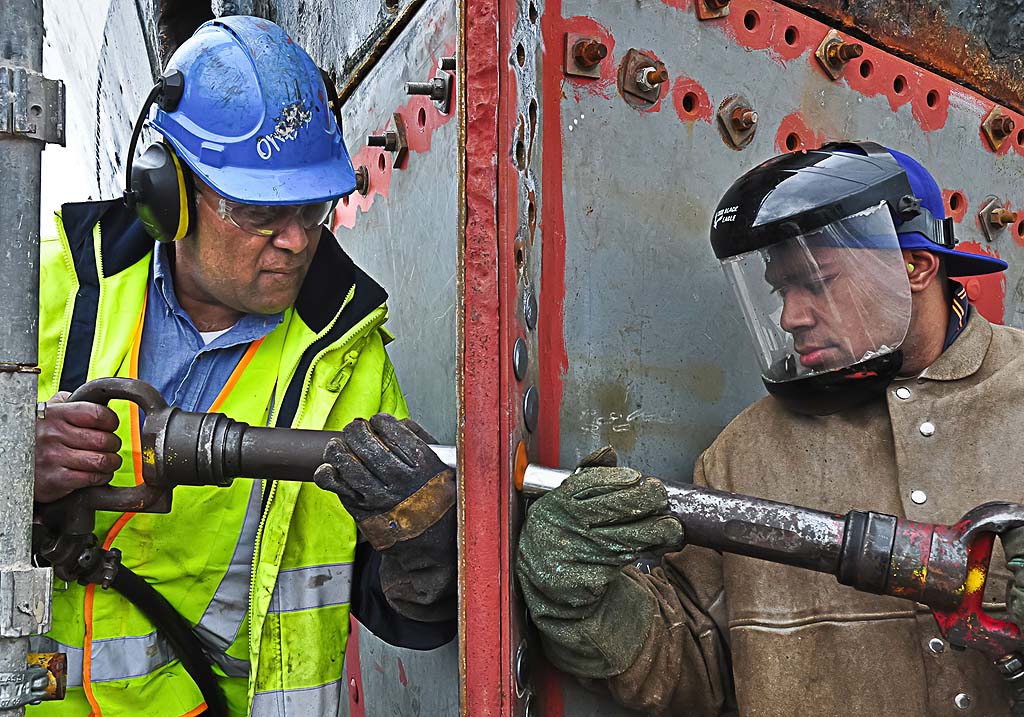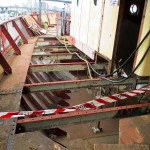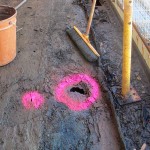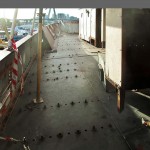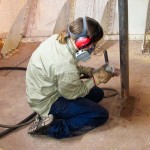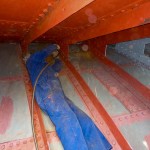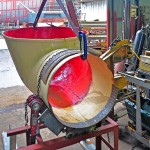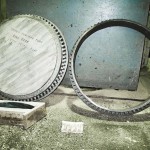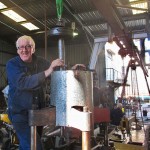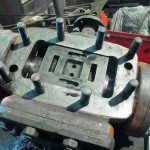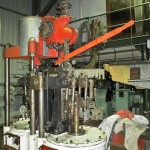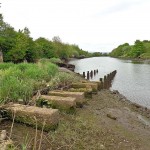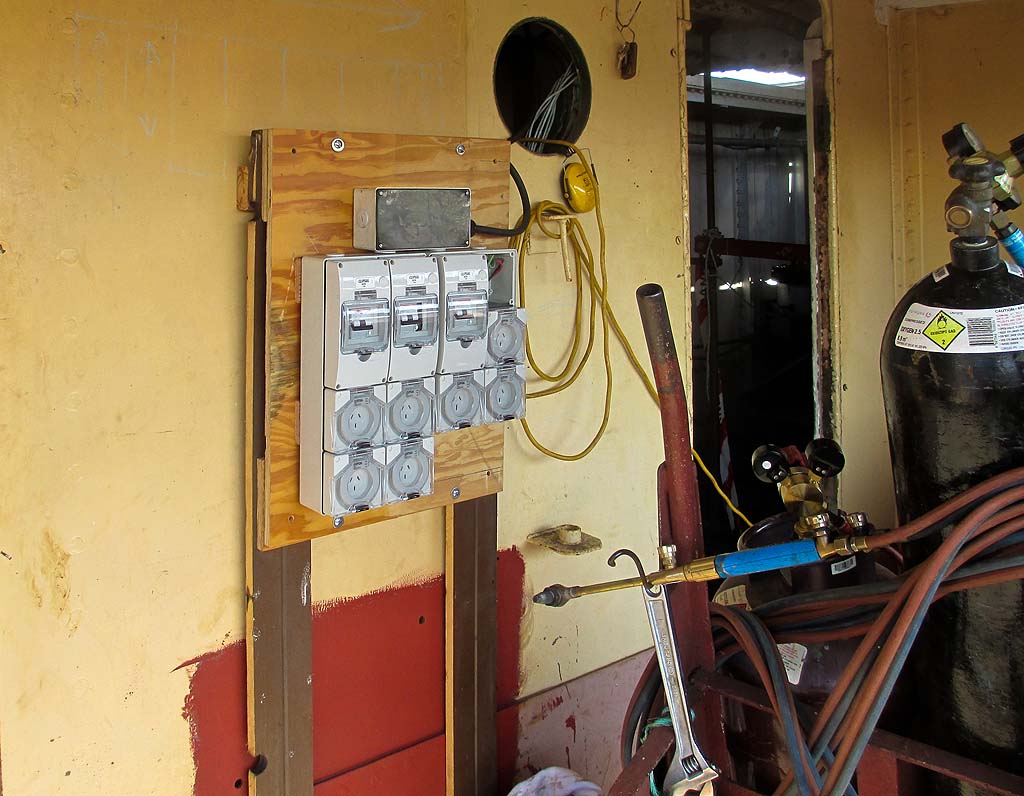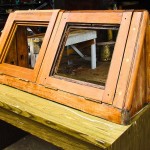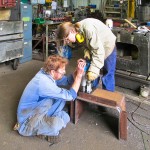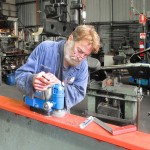John Oxley Restoration
Update July 2013
Sydney Heritage Fleet is a volunteer based non-profit organisation which restores, operates and maintains maritime heritage, sail, steam and motor. A vital part of this organisation is the Rozelle site, which is a hub for restoration, maintenance, and volunteering.
The current Sydney Heritage Fleet major restoration project is the 1927 coastal steamship John Oxley. This vessel is today the last of her kind in Australian waters. She was built in Paisley, Scotland and steamed out to work in Australian waters for the next 40 years. Still operational when handed over to the Sydney Heritage Fleet, John Oxley was soon laid up pending restoration. For many years the volunteers worked to restore other vessels in the Sydney Heritage Fleet collection, all the time gathering the skills needed to rebuild John Oxley were rediscovered and practised.
Milestone – Rudder re-installed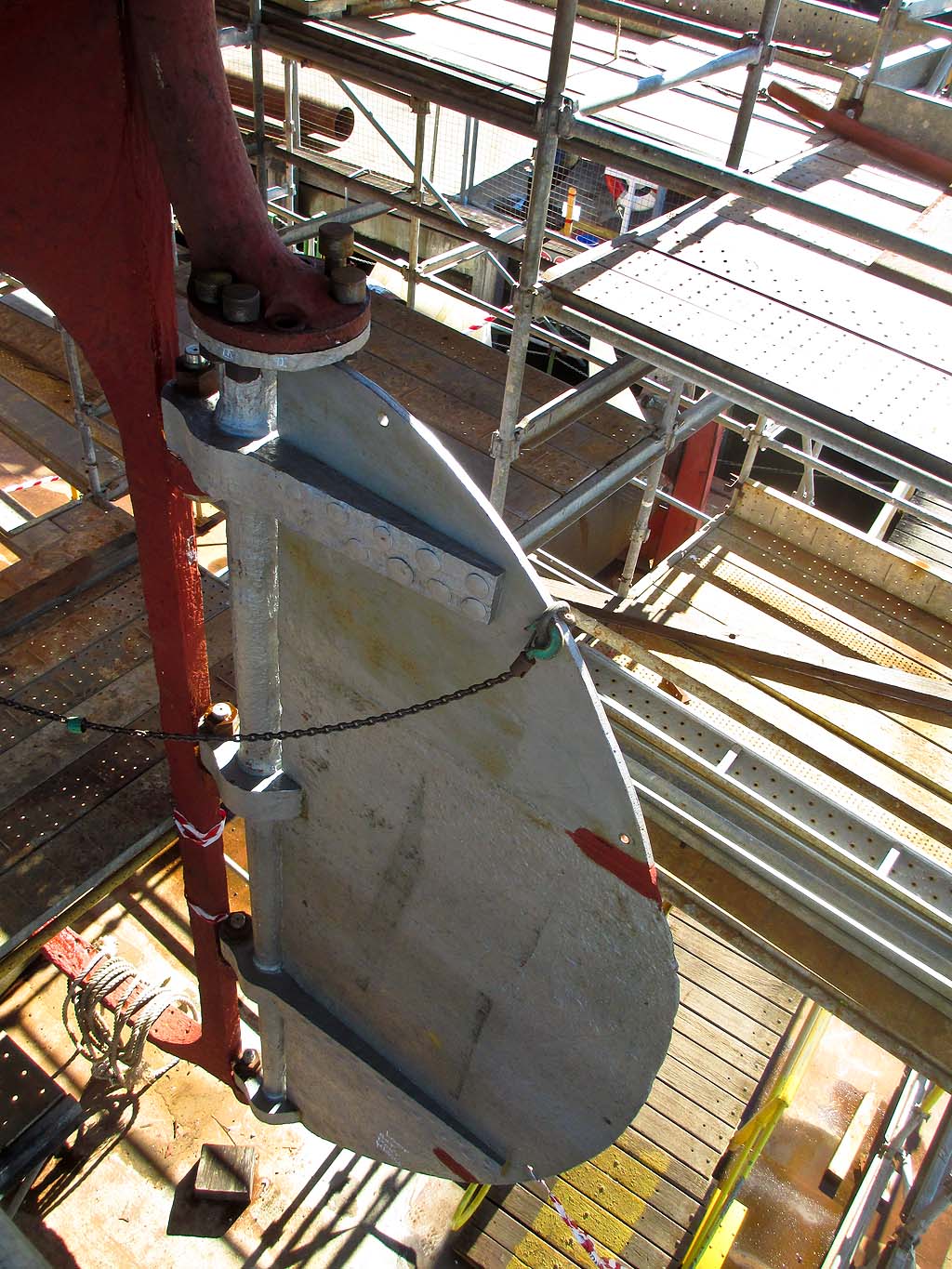
A major milestone late in 2012 was the riveting in place of the last hull plate below the main deck. Another milestone, and celebration, for both engineers, hull team and riggers was the return of a repaired rudder to the stern frame.
Both engineers and metal fabricators have worked together for some time to repair the rudder and steering gear to the stage where it was possible to reinstall it. Initial task was removal of the hand steering gear, followed by removal of the rudder tiller and badly rusted quadrant. Once ashore, the tiller was repaired and riveted to a newly fabricated quadrant. The hand steering gear was also overhauled and has been set aside for later return.
The rudder itself was in reasonable condition, but the upper steel plating was badly rust damaged and needed replacement. A new piece of 22 mm. steel was welded and riveted in place. New pintles and bushes were also machined and prepared. The rudder weighs over 2 tonnes and is also an awkward and unwieldy object to lift. Careful thought went into placement of slings and strops and the rudder was craned into place.
Main deck aft and above the engine room
In 2012 we celebrated the fitting and riveting of our last hull plate. From here, work on the main deck could commence in earnest. Initial task was to remove the old deck. Unfortunately much of this timber is not reusable as it has had a long and hard life. Nevertheless, most of this timber is being kept for future re-use somewhere else on the ship.
Under the John Oxley‘s Teak working deck is her actual structural steel plate deck. Apart from the need to for a deck to provide a safe working surface, the deck is necessary for keeping the water out, and decks must also carry large structural loads when a ship flexes in a seaway.
Unfortunately, museum ship owners often find that the steel plates under wooden decks are usually badly rusted and comprehensive repairs are necessary. John Oxley is no exception, and the hull team have started repairs aft and are moving forward, lifting the old wooden decking and then attending to rusted coamings and the steel decking itself.
Progress so far has seen new steel plates laid as far as the engine spaces starboard side and a start has been made on lifting tha deck portside.
- Main deck aft removed, starboardside
- Rusted main deck over engine room, port side
- New steel over pilot accommodation
Needle gunning
One constant need in ship restoration is needlegunning. On any day there always part of the project where needlegunning is needed. Volunteers who are prepared to needlegun are highly valued and their noisy and dusty work is greatly appreciated. Certainly an area of the project that needs to be expanded!
- Dianne needlegunning a stanchion
- Leslie needlegunning pilots accommodation
Fabrication work
Ventilators
While main decks and coamings are under repair, a number of smaller deck fittings have been removed to the workshop for repair. These fittings include cowl ventilators that service the cabins below the main deck plus similar but larger ventilators from the boat deck. This is basically heavy duty panel beating work and our welders often return to the older skills of oxy welding to repair these thin steel sections.
A special repair is the gear that is riveted to each of the boiler room ventilators. It enables the firemen to rotate their large ventilators into the wind direct from the stokehold tread plates rather than relying on the deckhands to carry out this task. Unfortunately one gear was broken into small pieces and had to be replaced. While we thought about a laser or water jet cut steel gear, our volunteer pattern maker Ken had quickly made a gear pattern and sponsors Wallbanks quickly cast the gear. No doubt future generations of firemen will appreciate the restorers’ workmanship and enterprise in this area.
The ventilator gear casting in cast iron is shown alongside its pattern and corebox. The pattern was crafted by workshop volunteer Ken and uses a special pattern makers measuring rule that allows 1/8″ contraction for every foot length of casting (3 mm. in 300 mm.).
- Boat deck ventilator under repair
- Ventilator casting pattern and gear
Engineering
Air pump
One of the more interesting engine room auxiliaries is the large Dawson & Downie air pump. While this pump ostensibly extracts exhaust steam condensate from the condenser, it is sized large enough to remove the high volumes of very low pressure air that are a nuisance in condensing steam plants. The engine has seen a lot of work as it is rarely stopped when the ship is in steam.
The Dawson & Downie pump steam chest is of the shuttle valve type, which will be familiar to engineers who have worked on the more common Weirs pumps. The pump has a flat faced shuttle valve. This feature is unusual and rare. We know of no other ships with a Dawson & Downie shuttle valve pump.
- Bill assembling steam piston to air pump cylinder
- Air pump shuttle valve detail
- Airpump under test
Dawson & Downie are still in business and are still producing steam pumps.
The air pump assembly work continues with testing at workshop level. Because of its size, the pump it will need to be broken down into sub-assemblies for craning back into John Oxley and final assembly.
New fire doors
Heritage ships are fitted with a large number of castings in bronze and in cast iron. While bronze castings will last for centuries, cast iron components, exposed to furnace heat and to salt water, will deteriorate and need replacement. We are fortunate to have a volunteer at Rozelle that has produced a prodigious quantity of timber patterns for castings over the years combined with good friends in the foundry business.
In another joint effort Ken has produced patterns in wood to Glenn’s drawings for replacing the old cast iron Howden fire doors. The view above shows arrival of new castings from the foundry. In time, new furnace fronts will need to be designed and manufactured when work starts in earnest on the boilers.
Paisley revisited
The history pages on our John Oxley and the book on its restoration show the Google Earth images of the Bow McLachlan shipbuilding site in Paisley, Scotland, where John Oxley was built. A John Oxley volunteer, Jonathon, recently visited Paisley in Scotland and even though awkward to access, climbed down onto the muddy banks of White Cart (creek) at Abbotsinch where John Oxley was built. He brought back some images of the small waterway where once ships like John Oxley were built. The image on the right shows rivets in the mud near the slipway. See also the History of Bow McLachlan & Co Ltd ship builders.
- Building slip Bow McLachlans Paisley
- Rivets in the mud Paisley
Electrical support work
The electrical team at this stage of the project are not yet much involved in restoration but are very active in support services. Work includes construction site level wiring, wiring local power supplies, installing lighting and then moving everything around when the hull team move forward.
Two generator sets have been donated and will be installed in a main hold enclosure. A third generator set, intended for emergency services, has also just been donated. They are in good condition but will need remedial work.
Now the task is to obtain further sponsorship to refurbish these three generator sets. We are also seeking sponsorship of electrical equipment including
• Switchboards, circuit breakers, switches, plugs, sockets and meters
• Wiring – range of sizes and types
• Cable trays and conduit
• Heritage and modern wiring fittings
Accommodation skylights – Main deck level
The teak skylights were installed at main deck level and have been removed so that hull team could replace rusted steelwork. These are also watertight structures, which must resist the weight of tons of water when green seas come on board and fill the decks.
Members Bob Ellis and George have started working on them. Teak is a wonderful timber as it can almost always be restored back to its original finish. The teak skylights rest on steel bases, which have been removed from the deck. The fabricators have replicated these structures.
- Main deck skylights over pilots cabins
- Don and Dianne drilling holes in new pilots cabin skylights base
Project benefits
Preserving our nation’s maritime heritage
The basic purpose – value to the community through conserving maritime treasures and keeping alive the skills needed to restore, operate and maintain our maritime heritage.
Volunteering
The project provides an opportunity for people to learn new skills and to use existing ones. It is also an opportunity for social contact plus the forming of friendships between people on the same wavelength. The project is enjoyable to attend without the commercial pressure of people’s normal work environment. The volunteer workforce is physically active and mentally “on-the-go”. It’s not just for the men, as we also have many ladies volunteering on this project.
Youth training
Our previous apprentices have been sponsored, and we would like to expand this valuable part of the project. Do we have anyone wishing to help here? We ask the metal industry to take the opportunity to sponsor further apprentices for work on metal fabrication. Our apprentices have been vital to the restoration and there are now quite a few skillful tradies in the community who gained their proficiency from this project.
We have also had a number of apprentices loaned to the project by outside companies during light work periods. Another option is for apprentices to learn heritage trade skills if they volunteer on days off.
Economical use of funds and material utilisation
All purchases are well thought-out and nothing is wasted when materials are used. Even remnants of steel plate are used to make pipe flanges and for training welders. The remainder is recycled, including old plates.
Equipment and parts needed
Most Sydney Heritage Fleet tooling and equipment is donated by industry because it was commercially out of date or a workshop was closing. This works well for us as 1927 ships do not need high tech equipment. Generally, our donated machines feel quite at home.
The work team wish list includes:
• Plain drill press – #3 Morse taper
• Horizontal borer – we are always needing to re-bore engine cylinders
• Drills and bridge reamers for 5/8″, 3/4″ and 1″ rivet work
• Nuts and bolts – all sizes – especially inch sizes
• Air hoses – about 25 mm for mains and smaller sizes for air tools
- Don using donated Hougen drill
- Donated galvanising
We continue to be thankful for the support given by industry and greatly appreciate the support given in so many ways. Galvanising in particular, is a gift that will keep on giving over the years.
Seeking sponsorship for electric pumps
The pumps are needed sooner rather than later as we are fabricating the piping systems. These pumps are in addition to the steam pumps fitted to John Oxley. If you are able to supply or sponsor the pumps then please contact our office:
• 75 mm. self-priming pumps for bilge service – 2 needed
• 75/65 mm. centrifugal pumps for fire service
• 75/65 mm. diesel fire pump
• 32 mm centrifugal pump deck wash
Can you help?
To visit the project or help with materials or services, please contact our office on (02) 9298 3888 or drop in on the project and ask to see Tim Drinkwater or one of the John Oxley team members.
